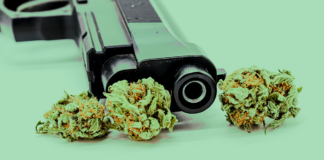December 18, 2018
 Rockville, MD: Self-reported marijuana use by adolescents has failed to increase in recent years despite the majority of states legalizing it for either medical or adult use, according to the latest data compiled by the University of Michigan’s Monitoring the Future survey, which is commissioned by the US National Institutes on Drug Abuse. NIDA is a part of the US National Institutes of Health.
Rockville, MD: Self-reported marijuana use by adolescents has failed to increase in recent years despite the majority of states legalizing it for either medical or adult use, according to the latest data compiled by the University of Michigan’s Monitoring the Future survey, which is commissioned by the US National Institutes on Drug Abuse. NIDA is a part of the US National Institutes of Health.
Summarizing the findings in a press release, the agency acknowledged: “Rates of marijuana use by teens have been of great interest to researchers over the past decade, given major social and legislative shifts around the drug; it is now legal for adult recreational use in 10 states plus the District of Columbia, and it is available medicinally in many more. Fortunately, even as teens’ attitudes toward marijuana’s harms continue to relax, they are not showing corresponding increases in marijuana use.”
Marijuana use prevalence by young people did not change significantly between 2017 and 2018, the survey data reported. Between the years 2012 and 2018, both rates of lifetime marijuana use and rates of annual marijuana use by 8th, 10th, and 12thgraders have declined. Ten states have enacted laws regulating adult marijuana use during this same period of time, and several others have legalized medical cannabis access.
“This latest data demonstrates that legalization and regulation is working as intended. By taking marijuana off of the street corner and putting it behind the counter of state licensed businesses, we are better equipped to discourage and limit youth access,” said NORML Executive Director Erik Altieri. “Legalization works because it provides oversight and control, two things there is a complete absence of under the Wild West of prohibition.”
Further data is available from NORML’s fact-sheet, “Marijuana Regulation and teen Use Rates,” available online here.











